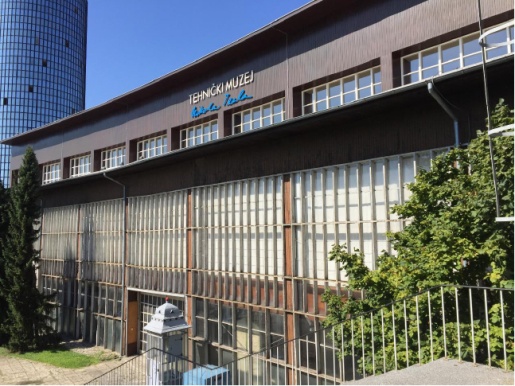Technical Museum Nikola Tesla, Zagreb, Croatia

The Nikola Tesla Muesum is a complex scientific and technical museum founded as opposed to more specialized technical museums covering specific technical field. The idea of establishing such a museum dates back to the late 19th century, but the real history of the Technical Museum in Zagreb started in 1954 with the official decision of its establishment. In 1959 the museum, completely made of wood, was assigned to its present location. Facilities were built in 1948 (architect Marijan Haberle) for the temporary purposes-the Zagreb Fair.
The building which is a cultural property is under reconstruction/restauration for the last 10 years.
When the fair moved to a new location, facilities were used for a variety of social and sports activities and later donated to the Museum. Thus, the wooden buildings of the original temporary purpose, here in a series of 68 years, remained in constant, intensive use, with a very large number of annual visits by visitors from abroad and domestic people. Entire structure was designed and constructed as a timber structure and as such represents a rare existing example of European engineering concept of expo-halls timber structures with large span (85x40m) from the early 20 century. Object of interest, besides of the building, are individual exhibition specimens that are under the protection of the Conservation Department in Zagreb, Protection of Cultural Heritage.
Main objectives:
- Enhancing the understanding of the history of institution, it’s role in Republic of Croatia, the artistic value represented by the building and the artworks;
- 3d model, video presentation of the object and collection exhibit;
- BIM model for condition assessment and improvement of energy efficiency in order to find solutions for thermal comfort (Thermal pictures. insight into the thermal conductivity).